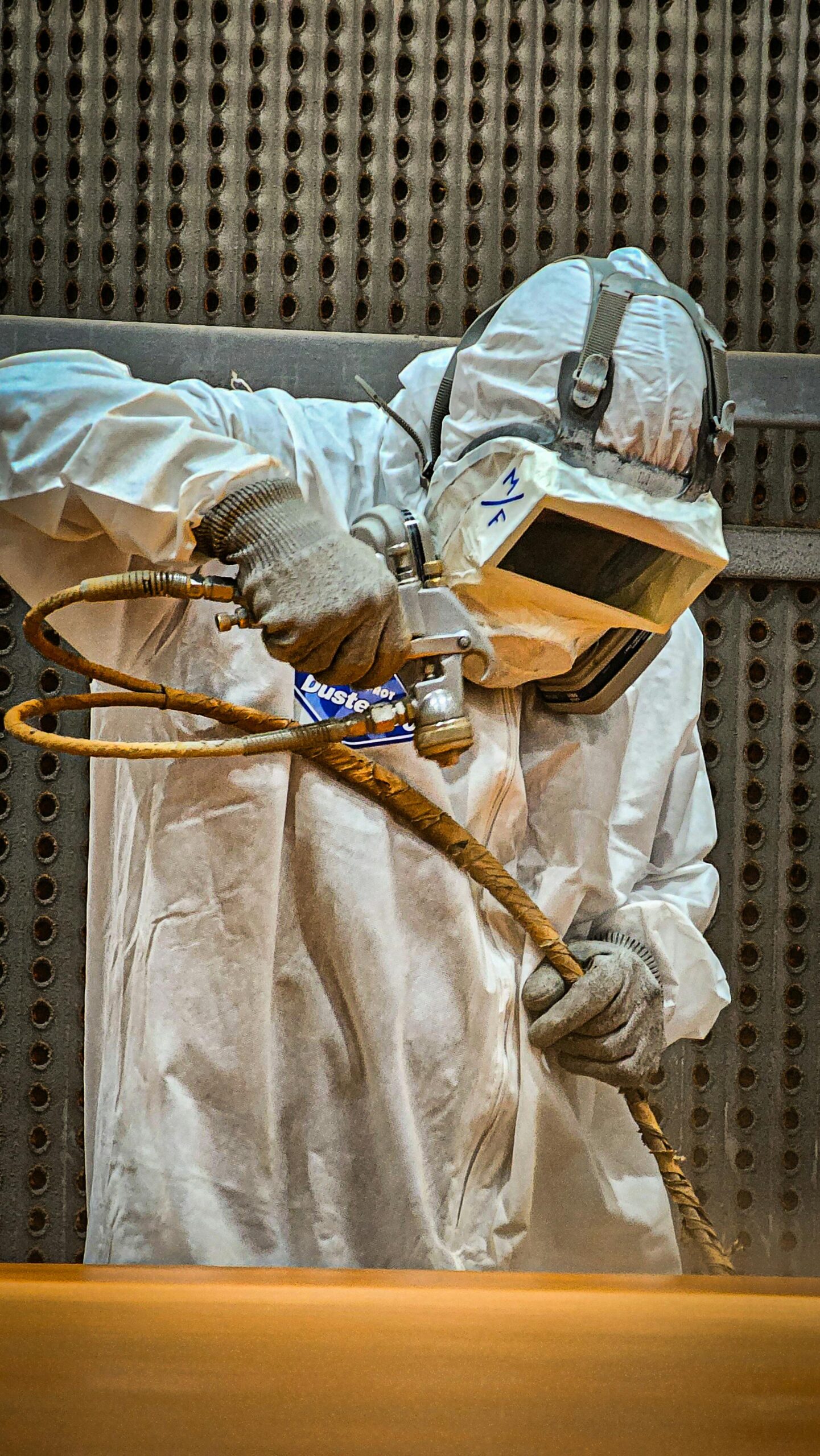
Abrasive Blasting Safety: What Every Workplace Needs to Know
If your business involves cleaning, preparing, or finishing surfaces for construction or manufacturing, abrasive blasting is likely part of your operations. While incredibly effective, this technique requires careful management to prevent exposure to substances found in the product being removed. Let’s break down what you need to know about abrasive blasting safety without overwhelming you with information.
What Exactly Is Abrasive Blasting?
Abrasive blasting uses pressurised air or water to propel abrasive media against a surface. Also known as sandblasting, or grit blasting, it’s widely used across manufacturing industries:
- Removing oxide skin and cleaning precision castings
- Preparing products for industrial paint coatings and corrosion protection
- Cleaning equipment and removing rust
- Surface preparation for better coating adhesion
- Descaling and removing old paint layers
Key Hazards to Manage
Understanding the risks is crucial for workplace safety:
- Dust and Respiratory Hazards
One of the most significant risks is exposure to respirable particles. Many abrasive media shatter during blasting, creating particles under 10 microns that can easily be inhaled, and some media, like crystalline silica, can cause long-term respiratory disease, which is why sand blasting with materials containing more than 1% free crystalline silica is prohibited, as well as some other restricted chemicals. Some metal abrasives are shatter-resistant, and chilled iron grit or cast steel grit can be recycled.
- Noise Exposure
Abrasive blasting equipment can generate noise levels up to 119 dB(A). Unprotected exposure can cause permanent hearing damage, even during short periods of use. Sufficient hearing protection should be arranged to prevent permanent hearing loss.
- Other Safety Risks to consider
- Sharp particles that can cause eye damage and lacerations
- Exposure to toxic substances in the air that were in the removed surface coating
- Heat stress from protective equipment in hot environments
- Vibration injuries from prolonged equipment use
- Manual handling issues from controlling blast hoses and equipment
Safety Controls
If the risks cannot be eliminated or substituted effectively, through a safer abrasive media or lighter equipment, for example, then here are some engineering solutions.
Engineering Solutions
- Use blast cabinets or chambers whenever possible
- Implement robotic abrasive blasting that is isolated from employees for consistent results and reduced worker exposure
- Ensure proper ventilation systems are installed and regularly maintained
- Use automated cut-off devices (“dead man controls”) on all blasting equipment
Material Selection
Choose the right abrasive media for your specific application:
- For delicate surfaces: glass beads or walnut shells
- For hard, durable surfaces: aluminium oxide or garnet
- For versatile applications: garnet
Importantly, avoid abrasive media containing restricted hazardous chemicals like crystalline silica, lead, cadmium, or arsenic.
Less effective controls use Personal Protective Equipment or Administrative Controls. Here are some examples which can be used to supplement better controls (elimination, substitution and engineering).
Personal Protective Equipment
PPE and administrative controls are your last line of defence in the ‘Swiss cheese model’, and should not be relied upon on their own, if there are reasonably better controls, and if the risk is very high. They should be used as supplementary controls:
- Airline respirator hood or helmet for operators
- Protective clothing to keep out dust and abrasive grit
- Appropriate gloves and footwear
- Hearing protection for all workers in the vicinity1
Administrative controls:
- Regular maintenance of all blasting equipment
- Proper training for all operators and maintenance staff
- Establishing exclusion zones during blasting operations
- Job rotation to limit exposure times
- Good housekeeping to prevent dust accumulation1
Remember, proper safety practices not only protect your workers but also improve efficiency and product quality. By selecting the right equipment, materials, and procedures, you can achieve superior results while maintaining a safe workplace.
